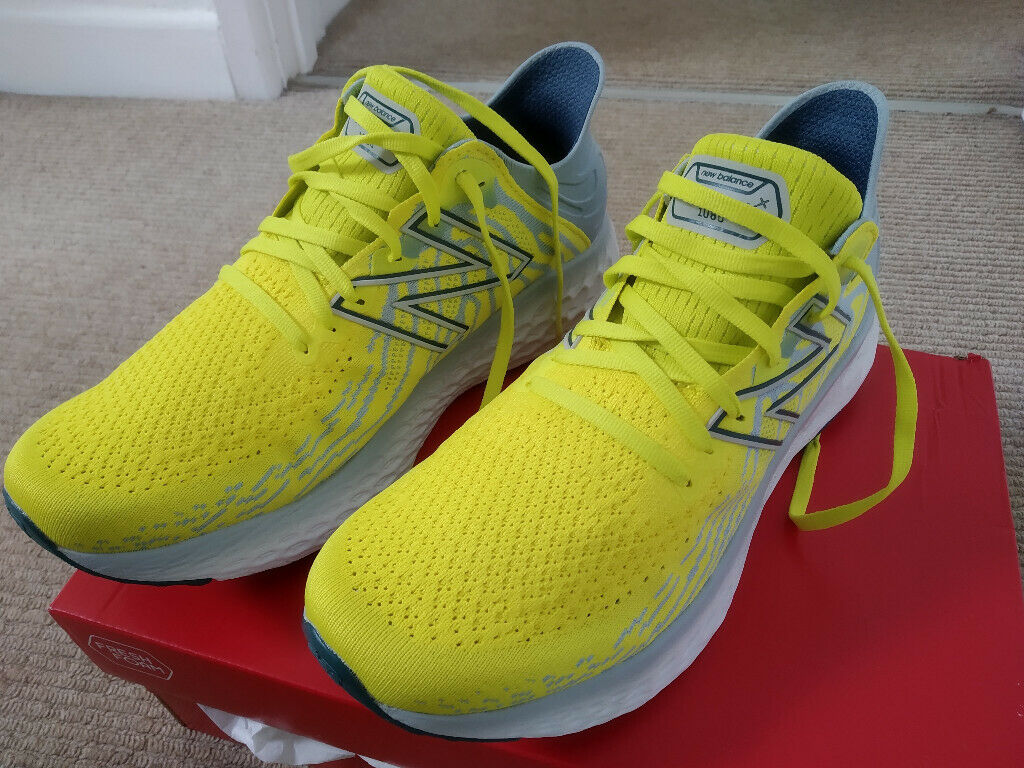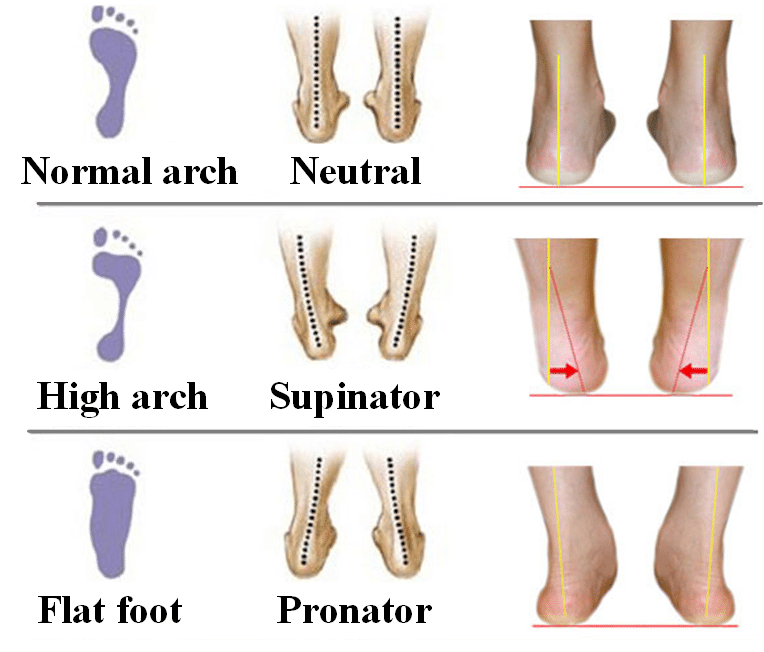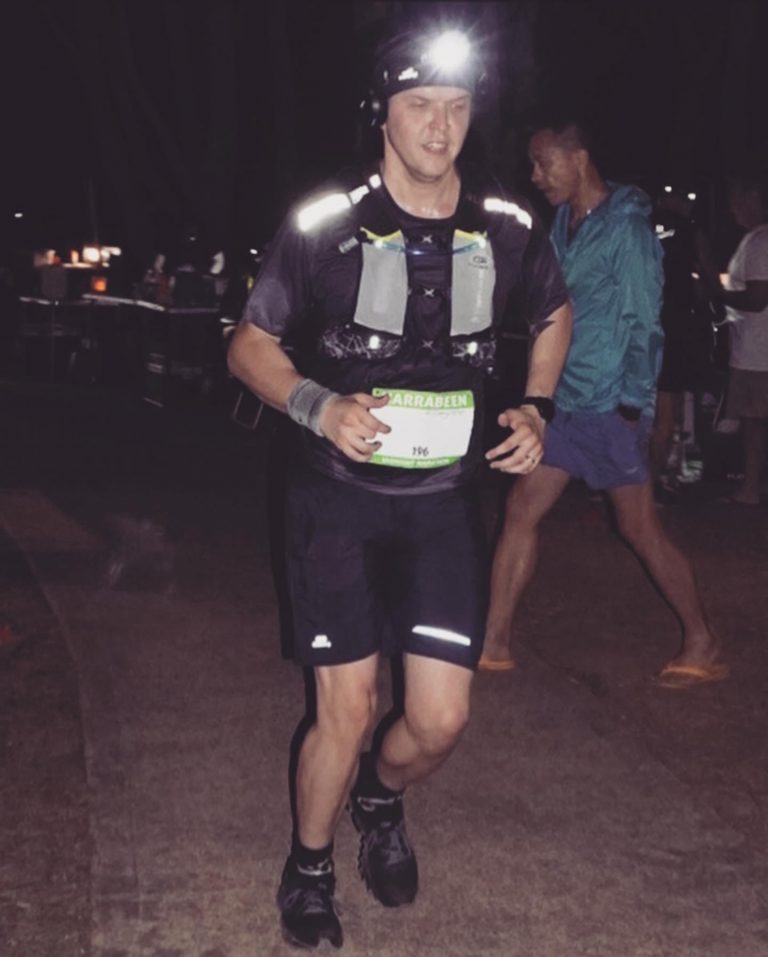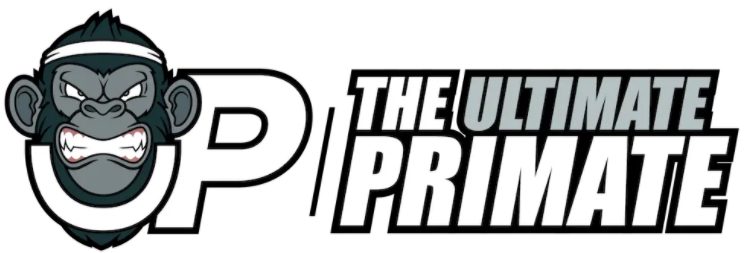If you’ve clicked on this article, chances are that you already know you exhibit underpronation, also called supination, and you want to correct this.
Underpronation means that, after your heel strikes the ground, your foot tends to roll outward in order to meet the ground. That way, the outer edges of your foot feel the weight of your landing. After this, you tend to push off from the outer toes.
A simpler indication of underpronation can be seen by the arch of your foot. You might hear runners say that they have high arches and need running shoes to help support them. Well, this is underpronation!
If you’ve decided that you are certainly a runner who underpronates, this post has reviews of some of the best running shoes for underpronation.
Best Running Shoes For Underpronation or Supination Compared
1. ASics Gel-Nimbus 24 Running Sheos
Reasons to buy
- Spacious toe box for a comfortable fit
- Gel cushioning system in the heel for shock absorption
Reasons to avoid
- Upper stretches too far
The ASICS Gel-Nimbus 24 Running Shoes are a good choice for underpronators as they provide excellent support and cushioning for a more natural gait.
These are one of my daily runners that I’m using and the shoe features a gel cushioning system in the heel, which helps to absorb shock and reduce impact on the feet. This makes it a viable option for those who are looking for a comfortable and responsive shoe like myself.

One of the unique features of the Gel-Nimbus 24 is the FlyteFoam midsole. This technology provides a bouncy and responsive feel, making it ideal for those who need a shoe that can keep up with their active lifestyle.
This is especially beneficial for underpronators, as it promotes a more natural gait and reduces the risk of injury.
However, I think that the shoe feels heavy and it can be a drawback for some. Additionally, the Adapt Mesh upper of the shoe provides breathability and support, making it comfortable to wear for extended periods of time, but some customers may find it not as breathable as they expected.
2. ASICS Gel-Cumulus 24 Running Shoes
Reasons to buy
- Great support on the outsoles
- Wider outsoles for full contact landing
- Gel technology for shock absorption
Reasons to avoid
- Uncomfortable insoles reported by some users
- Not great for wider feet
The ASICS was a really close competitor with its Gel-Cumulus and could very well be at the top. Its quite basic design may fool you, as I was, but its features are really great for those who underpronate.
I’ve really noticed how much attention to design was poured into the shoe. The outsole is wider than most running shoes to accommodate a range of foot postures.
Because the shoe tends to help you feel the ground at full contact, runners with underpronation will tend to correct their foot posture by themselves.
You will also notice that the heel has that extra support and cushioning that most neutral shoes catered to underpronators have. This added foam is called their FlyteFoam Propel technology.
It even incorporates their GEL technology by the heel, which helps absorb the shock that happens every time your foot lands on the ground.
The only thing that might be a bit disappointing is how, despite all this added cushioning, its insole doesn’t seem to keep up with that comfort! This is quite disappointing since the added outer features would mean nothing if the interior is uncomfortable.
Not only is this good for underpronators, I also think that its an awesome daily runner and I’ve oftentimes preferred the gel as opposed to typical foams as I feel as though it provides more energy return for my strides. The style is also great:

It is definitely a big upgrade from previous versions with its new FF blast foam which makes the ride smoother and more fun. The snug fit with the sock liner is also an additional great bonus.
3. Saucony Triumph 19 Running Shoes
Reasons to buy
- Thick cushioning all throughout the shoe
- Flatter shoe for lower impact runs
- More stylish than previous designs
Reasons to avoid
- Some users say the toe box is a bit narrow
Some people, like me, tend to like their shoes cushioned as much as it can be without compromising the weight of the shoe.
The Saucony Triumph 19 seems to have found that balance; its thick soles extend from the heels to the forefoot, making for a great neutral shoe.
These soles are also designed to save your feet from failure on your longer runs. A thinner layer spreads itself on the underfoot for an extra spring to your step.

The heel-to-toe drop is not as drastic as other shoes catered to runners who underpronate. This means that the height difference between the cushioning at the heel and at the forefoot is almost the same, with just a bit of offset.
Flatter shoes are said to make your stride lower impact compared to hitting the ground heel first. You will probably tend to land on your midfoot with these shoes, which spreads the impact evenly and prevents injury.
The upper feels more comfortable with a sleek fit into the sockliner. This running shoe does fit true to its size although the previous models the toe box was a bit narrow, Saucony seems to have fixed that this time around.
The shoelaces on this model aren’t the best, they feel very bulky and stretchy and it takes a while to get that secure fit whilst it also looks like the durability of that method won’t last long in keeping the shoe snug.
If you’re looking for a more slow-paced traditional running shoe with heaps of safety and comfort, this is a great option.
4. New Balance Fresh Foam 1080 V11 Running Shoes
Reasons to buy
- Thick cushioning
- Comfortable insoles
- Thick to thin outsoles for more spring
Reasons to avoid
- Wear and tear reported by some users
The first thing you’ll notice about the New Balance Fresh Foam 1080 V11 is the thick midsole. It might seem a bit daunting at first, but it’s actually a foam called the Fresh Foam.
You might be worried about the foam material — after all, foam usually makes for a squishy shoe — but the 1080 V11 actually catches that balance of soft and supportive. This is especially great for longer runs; your foot is going to need that extra cushioning in the long run.
Its outsoles are made of a harder material by the heel and softer towards the forefoot. New Balance has clearly taken into consideration the usual heel strike of runners. The lighter material at the front makes it easier to spring and push your foot off the ground.
Users are raving about the comfort of these shoes, and I agree! The inside hugs your feet, and you might want to thank the Ortholite Sockliner for that. They are foam insoles that are great for long runs. For me personally, the sockliners have been a game changer for comfort as well as breathability as my feet tend to sweat a lot, and honestly the style sets it apart:

In my opinion, though, these aren’t the best shoes for underpronation. They have all the basics of a neutral shoe but that’s pretty much it!
5. Brooks Glycerin 20 Running Shoes
Key Features
- DNA LOFT offers pillow cushioning experience
- Ideal for road running and marathons
Reasons to buy
- Extra cushioning
- Breathable mesh upper
- Interior liner for added comfort
Reasons to avoid
- Pricey
The Brooks Glycerin 20 is another viable shoe for underpronators as it provides excellent support and cushioning for a more natural gait.
The shoe features a DNA LOFT cushioning system in the heel, which helps to absorb shock and reduce impact on the feet. This makes it a great option for those who are looking for a comfortable and responsive shoe.
Additionally, the shoe’s 3D Fit Print technology, which is a unique and tailored fit for the shoe, provides a great fit for underpronators.
I’ve previously had Glycerin 17’s when I started off with doing more long distance running and it was a great help to my knees. The style wasn’t my favorite, although I did get to check these out at a local run store and they have improved:
Brooks recommends this for your long-distance runs, so if you’re one to run marathons, this might be for you. Its underfoot is also designed so that, when your heel strikes, you are stabilized. After which, you transition into push-off, with lines on the sole guiding you forward.
However, one drawback of the Brooks Glycerin 20 is the price, as it is relatively expensive compared to other running shoes. Additionally, some people may find that the shoe feels heavy and it can be a drawback for some.
6. Brooks Adrenaline GTS 21
Reasons to buy
- Provides a very stable fit with minimal slippage
- Durable outsole
Reasons to avoid
- Some may not like the high hee-to-toe drop of 12mm
The Adrenaline GTS 21 are one of the newer Brooks shoes and they have a lot going for them. They provide great stability which is suitable for supination and a decent amount of cushioning with its DNA Loft system.
One thing that some runners may not prefer is the rather high heel-to-toe drop which measures at 12mm.
It’s very similar to the Brooks Ghost, however the Adrenaline GTS 21 has been noted by most runners that it has a bit less slide, offering more stability in that regard. It has a very durable outsole and is suitable for a variety of foot shapes.
If you’re a rearfoot striker, and are after a pair of durable running shoes then this could be the right pair for you.
I’ve included these shoes as part of my daily runners because its great for stability, the style I’m really fond of also

7. Nike Air Zoom Structure 23
Reasons to buy
- Lightweight
- Soft cushioning
- Suitable for most foot types
Reasons to avoid
- Not very breathable
Its only fitting that a pair of Nike’s makes the list. The Air Zoom Structure 23 provides a more neutral fit than the other shoes on the list however it contains very soft cushioning.
Nike has become good at producing shoes that are suitable for most running gaits and as such these are a decent pair of running shoes for supinators as well.
Nike tends to be more lightweight than other brands such as Brooks and Saucony and the style of these shoes means that you can use them for everyday use as well or even walking.
It contains a Zoom Air unit in the forefoot which is a responsive cushioning system. Other runners have said that these shoes aren’t breathable compared to those with mesh uppers.
If you’re looking for a fast, lightweight shoes that is versatile for daily use but don’t mind less breathability then this could be the perfect fit for you.
What to Consider When Buying Running Shoes for Underpronation or Supination
Although you do need some cushioning for your high arches, the recommended shoe for those who exhibit underpronation is the same as those with normal pronation — a shoe with neutral support.
How do you know your type of pronation, though? What are some things to look for in running shoes for those who exhibit underpronation? Let’s look at some of the things to consider.
Pronation
This is the first type, and although I assume some readers might already know they underpronate, some might have no idea what I’m talking about.
Pronation, as mentioned earlier, is the way your foot strikes the ground, and how it rolls to meet the ground. This will obviously be very crucial for runners; without the proper support to suit your pronation type, you’ll be faced with a lot of possible injuries.
Normal Pronation
You have normal pronation if your foot comes flat on the ground after your heel hits the ground. To meet the ground, your ankle will roll slightly inward, but not excessively.
If you have normal pronation, congrats! You’re less likely to get injured due to your foot posture. You also don’t need any special support aside from the neutral shoe.
Expect that stability is no issue for you. You also have normal arches, and the wear on your soles is even all throughout. A neutral or stability running shoe is great for you.
Although all shoes listed here may be swapped out for normal pronation shoes, the Brooks Glycerin does tend to be less geared towards higher arches.
Overpronation
Runners who overpronate tend to roll their ankles inward excessively, about 15 degrees inward when your foot meets the ground. You also probably tend to push off with the big toe.
Your arches tend to be low, and the wear of your sole tends to be near the inside of the forefoot.
Those who overpronate might experience some hip, knee, or back pain. Ankle pains are also familiar to you, and it’s really important that you correct this posture with the proper motion control or stability shoe.
The Mizuno Wave Rider 23 will be able to accommodate you if you only slightly overpronate. However, more than that and you might want to look for other shoes!
Underpronation
The man of the hour: underpronation. You tend to meet the ground by rolling more outwards, with the outer edges of your foot hitting the ground. You also tend to push off from the outer toes.
You already know that underpronators will have higher arches. You want to find running shoes that have neutral support and extra cushioning to support those high arches! Your heels are going to take the impact without the proper cushioning.
How To Know Your Pronation Type
A way to check your pronation type is to wet your foot and place it on a piece of paper.
The shape will determine your arch height:

Cushioning
Cushioning is something to consider when looking for any running shoe in general, but it is extremely important for those who underpronate.
Your high arches tend to unevenly distribute the impact of your landing. For normal pronation, the shock of your foot hitting the ground (especially while running) is evenly distributed since the whole foot lands on the ground.
Underpronators, on the other hand, will feel the landing mostly on the heel. Then, it goes straight to the front of the foot instead of going through the midfoot.
Having extra cushioning will protect your heel from the inevitable higher impact that it will receive when it does not have cushioning. The Saucony Triumph 17 can help you out by having a flatter stride with more cushioning. The flat surface will decrease the impact of your run.
Comfort
At the end of the day, you’ll be wearing these shoes for miles and miles on end, so having comfortable shoes are really important in my opinion. Sometimes, despite its extra cushioning and all these great features on the outside, the interior might not live up to that.
Make sure the insoles will cushion the inside of your shoe like the New Balance Fresh Foam. Although their foam insoles are not the best, they still cushion your feet pretty well for the long runs.
Frequently Asked Questions
If you choose shoes that have extra comfortable insoles, then you can probably get away with using one shoe for running and for the gym. Running shoes don’t tend to have that extra soft interior like most workout shoes do, so maybe turn to removable insoles that you can buy elsewhere.
There are several reasons. Usually, it is inherited, but it may also be due to weaker muscles on your feet due to wearing rigid shoes all the time, or maybe misalignment of the body (like standing on one foot more than the other!).
Aside from looking for shoes with extra cushioning, you can get yourself some orthotic insoles to really support that high arch. You can get them custom-made, but there are some on the market that is already great for you.
Conclusion
Running shoes can get tricky, especially if you have any conditions that cause you to get shoes that are especially for your foot posture. Fortunately, sports brands all over the world have become more and more inclusive!
Make sure to always check out reviews before buying running shoes. It’s best to check it out yourself in a physical store, especially since the people at the store will usually know what shoes are best for you as an underpronator. Have fun looking for your new kicks!

Marko Rakic is a trail runner and fitness enthusiast from Sydney, Australia. He is the lead writer for The Ultimate Primate and believes the best way to live a happy life is through constantly challenging yourself.







